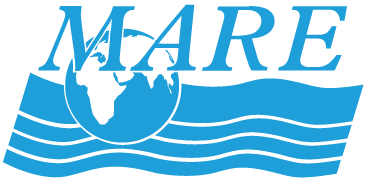Skip to content
- Define the term current. A current is defined as water flowing in one direction across some time and distance.
- Review density of water in the ocean. When ocean water becomes warmer or colder or saltier the relative density of that water changes. These density differences cause the water to move.
- Explaining the models. Each of the 9 models involve a large tank containing freshwater or saltwater and a cup, clipped inside the tank. The cup is filled with freshwater or saltwater or ice and the contents are colored so that we can see where they are. There is a pushpin making a small hole in the side of the cup which can be removed, to allow the cup’s contents to flow out into the tank. The density of the water in the cup and the density of the water in the tank will this current of water.
- Predict what will happen. Explain to the students that Model Ocean #1 contains room-temperature freshwater and the cup, with the pushpin stuck in the side, has colored hot freshwater in it. Ask them to predict where the colored hot freshwater will go. Will it flow along the bottom of the tank, across the top, or will it just flow everywhere?
- Run the simulation for Model Ocean #1. Have the students observe what happens when you run the simulation for Model Ocean #1. Ask the students to discuss what they noticed and try to explain why the current moved in the way that it did.
- Making Sense of Ocean Currents. Have the students make predictions for each of the models,(especially Model Ocean #4 and #8). As they observe the simulation models, ask the students to discuss what they notice and try to explain why the currents move in that way. [All the models have denser substances sinking below substances that are less dense.]
- Density-driven Currents. Explain that these vertical ocean currents are driven by differneces in density. The differences in density are caused by differences in temperature of the water or differences in the amount of salt in the water. Students may be able to think of places in the ocean where the water is warmer, colder, less salty and more salty, where these kinds of currents may occur.

